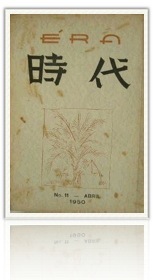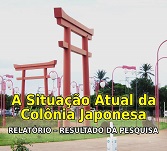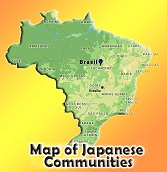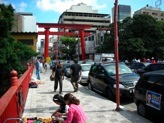Centro de Estudos Nipo-Brasileiros
Center for Japanese-Brazilian Studies
History: From Doyokai to CENB
The origin of the CENB goes back to October 1946, when a group of Japanese immigrants and descendants in São Paulo began to discuss the issues related to the Japanese community. Amid the chaos following Japan's defeat in WWII, they were in search of new ideas that would guide their community for the future. This gathering of a journalist, a sociologist, a lawyer, a mathematician, a businessman, and a painter called the Doyō-kai (Saturday Club) and it continued to publish its journal Jidai (Éra) until March 1953 (No.16).

In 1948, the members of the Doyō-kai also started a study group, the San Pauro Jinmon Kagaku Kenkyū-kai (São Paulo Research Group of Human Sciences), in order to enhance the understanding of both the Brazilian society and the Japanese community in Brazil. The results of their collaborative research were published in the Book Series for Brazilian Studies (1953-63, 4 volumes) and other books and articles.
In response to the demand for scientific and multi-dimensional study of Japanese immigration to Brazil, the Research Group was reorganized into the San Pauro Jinmon kenkyū-jo (Centro de Estudos Nipo-Brasileiros, Center for Japanese-Brazilian Studies) in March 1965.
The members of the CENB have played a central role in the study of the Japanese community in Brazil and in writing the history of the Japanese immigration to Brazil, contributed greatly to the field of literature and art. The numerous publications by the members are used as essential resources by government agencies, the media, and scholars.

Copyright © Centro de Estudos Nipo-Brasileiros









